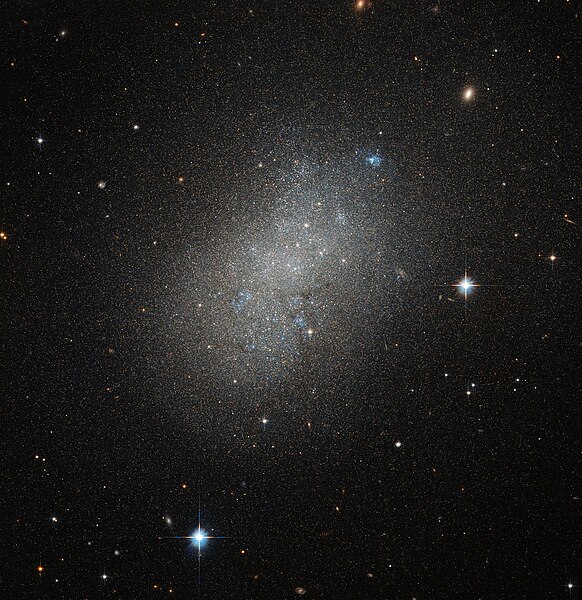NGC 1705 is a peculiar lenticular galaxy and a blue compact dwarf galaxy (BCD) in the southern constellation of Pictor, positioned less than a degree to the east of Iota Pictoris, and is undergoing a starburst. With an apparent visual magnitude of 12.6 it requires a telescope to observe. It is estimated to be approximately 17 million light-years from the Earth, and is a member of the Dorado Group.
NGC 1705. Credit: NASA.
A dwarf galaxy is a small galaxy composed of about 1000 up to several billion stars, as compared to the Milky Way's 200–400 billion stars. The Large Magellanic Cloud, which closely orbits the Milky Way and contains over 30 billion stars, is sometimes classified as a dwarf galaxy; others consider it a full-fledged galaxy. Dwarf galaxies' formation and activity are thought to be heavily influenced by interactions with larger galaxies. Astronomers identify numerous types of dwarf galaxies, based on their shape and composition.
The Large Magellanic Cloud, a satellite galaxy of the Milky Way
Dwarf galaxies like NGC 5264 typically possess around a billion stars.
The Phoenix Dwarf Galaxy is a dwarf irregular galaxy, featuring younger stars in its inner regions and older ones at its outskirts.
UGC 11411 is a galaxy known as an irregular blue compact dwarf (BCD) galaxy.





